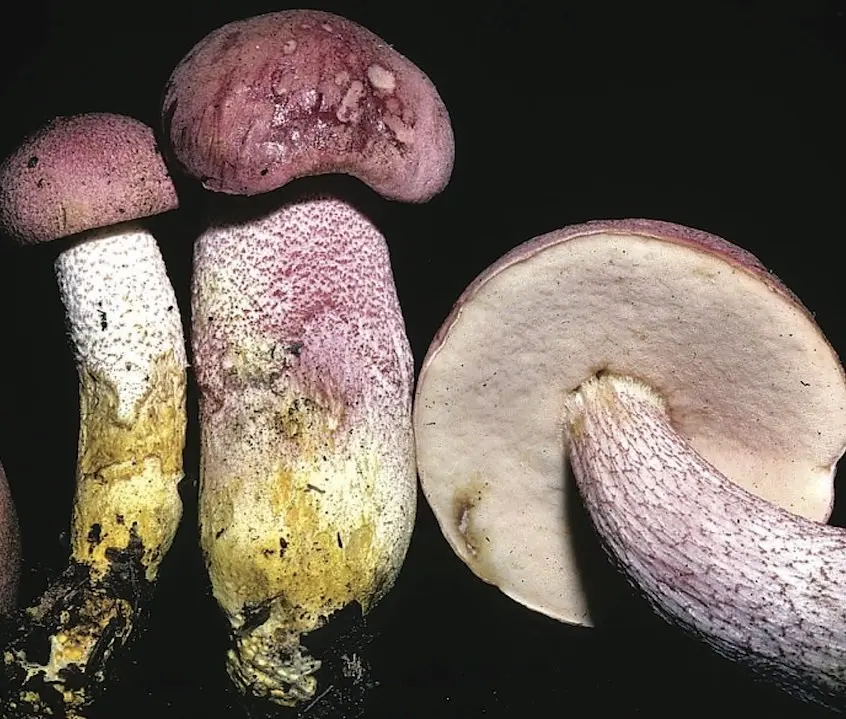Colored-footed obobok (Harrya chromipes)
- Division: Basidiomycota (Basidiomycetes)
- Subdivision: Agaricomycotina (Agaricomycetes)
- Class: Agaricomycetes (Agaricomycetes)
- Subclass: Agaricomycetidae (Agaricomycetes)
- Order: Boletales (Boletales)
- Family: Boletaceae (Boletaceae)
- Genus: Harrya
- Type: Harrya chromipes (Painted-footed moth)
- Boletus painted-legged
- Birch painted with legs
- Tylopilus chromapes
- Harrya chromapes

Easily distinguished from all other buttercups by the pinkish color of the cap, yellowish stem with pink scales, pink, and bright yellow flesh at the base of the stem, yellow mycelium and pinkish spores. Grows with oak and birch.
This type of mushroom is North American-Asian. In Our Country, it is known only in Eastern Siberia (Eastern Sayan) and the Far East. For pinkish disputes, some authors attribute it not to the genus of obabok, but to the genus tilopil.
Hat 3-11 cm in diameter, cushion-shaped, often unevenly colored, pink, hazel with an olive and lilac tint, felted. The pulp is white. Tubules up to 1,3 cm long, rather wide, depressed at the stem, creamy, pinkish-gray in young fruiting bodies, pale brown with a pinkish tinge in old ones. Leg 6-11 cm long, 1-2 cm thick, white with purple scales or pink; in the lower half or only at the base bright yellow. Spore powder chestnut-brown.

Spores 12-16X4,5-6,5 microns, oblong-ellipsoid.
Colored-footed obabok grows on the soil under a birch in dry oak and oak-pine forests in July-September, often.
edibility
Edible mushroom (2 categories). Can be used in the first and second courses (boiling for about 10-15 minutes). When processed, the pulp turns black.









